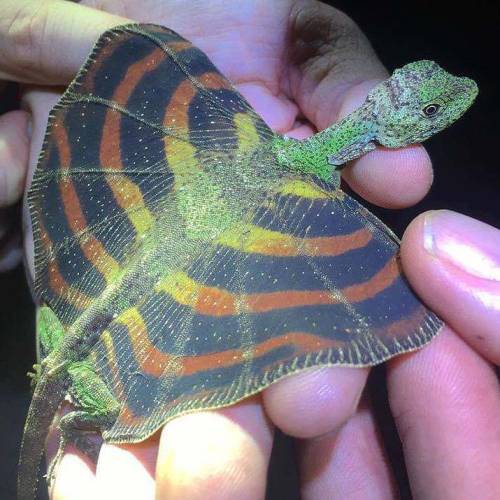Refseek.com


refseek.com

www.worldcat.org/

link.springer.com

http://bioline.org.br/

repec.org

science.gov

pdfdrive.com
More Posts from Gatortavern and Others
the critical thinking sheet filled with questions to mull over is nice and very much appreciated
Y’all “critical thinking” does not equal “criticism”.
ok ive actually been wanting to ask this for a while; can getting stabbed in the stomach/abdomen really cause blood to come out of the mouth or is that just a dumb trope for The Drama?
Yes, but also, yes.
There are a lot of injuries that can result in blood in your respiratory system. The most obvious would be puncturing a lung, or bruising a lung (called a pulmonary contusion.) Also, bleeding from the sinuses that gets into the throat can result in coughing up blood (though this one is pretty benign.) As a general rule, you do not want fluid in your lungs at all, and fluid that is prone to coagulating, blocking your lungs' ability to absorb oxygen is a very bad thing.
And it gets worse, for your body to effectively expel a large glob of blood, the way you usually see in films, you would need a lot of blood in your lungs. On their own, even relatively minor pulmonary contusions have a pretty significant mortality rate. What this means is, if you're ever coughing up blood, there's about a 30% chance you're going to die.
Also as a quick aside, particularly violent coughing can result in some minor spotting from broken blood vessels. It's not inherently life threatening, but it is something that should be checked out quickly, because it can be a symptom of something worse. (Such as lung cancer.)
The way these injuries tend to get inflicted is a mixed bag. When someone's been getting beaten (particularly in the upper torso), they've been in an explosion, or a car accident, then it's not that unreasonable for them to be coughing up blood. A pulmonary contusion is a pretty plausible injury in those circumstances. And again, that pulmonary contusion could easily end up being the fatal injury.
When a character has been shot or stabbed in the stomach, then it's less plausible. There's a bit of a distinction here, because if you have serious hemorrhaging from internal injuries and that gets into your stomach, it's quite possible you'd vomit blood. You don't see this very often in film, coughing is far more popular, and in a lot of cases, you'll see characters coughing up blood when they should be vomiting. As with pulmonary contusions, this is not a symptom to screw around with, if someone's vomiting blood, they're at very serious risk of dying, and need immediate medical care.
So, is it just used for drama? Yeah. It is. Stage coughing is pretty easy for an actor, and a little bit of slight of hand with a blood pack can let them get a nice death scene in. It's not about the realism of the injury, and in most cases, aside from coughing up blood, they're not exhibiting any of the other associated symptoms (including the ones that are more common.) When someone's coughing up blood like this, they're also suffocating, because their lung can't absorb oxygen out of the air. As a result, they'll frequently start hyperventilating. Which, you'll never see in one of these scenes. The actor will lay there, deliver their lines, feign pain, and then spit up a red dye pack and relax. Which, that's not how this injury works at all.
So, yes, it is a real injury, but also, yes, this is something that is used for dramatic effect and not out of any interest in realism.
-Starke
This blog is supported through Patreon. Patrons get access to new posts three days early, and direct access to us through Discord. If you're already a Patron, thank you. If you’d like to support us, please consider becoming a Patron.
Hi! Thank you so much for all the time and help you provide, can't think of a better writing blog to go to. So my question is, what do you think are the most important elements to take into consideration when creating a timeline? How do you make a timeline I guess I'm asking lol :)
Making a Timeline for Your Story
I’m not sure if you’re asking about figuring out the timeline of your story’s events or creating an actual timeline as part of the planning process, so I’ll address both. :)
Figuring Out Your Story’s Timeline of Events
1. First and foremost, figure out a general span of time for your story in terms of the year/s it takes place and the months. If you’re not sure what month your story should begin, consider what needs to be happening then. For example, if there’s going to be snow falling in the first scene, you know your story begins during a winter month.
2. Create a calendar for your story covering the months/years in question. You may just want to download a blank calendar template and print out several that you can fill in by hand.
3. Once you have your calendar printed out, fill in the days of the first month. Then you can choose an appropriate “day one” for your story and jot down what scene or event happens on what day. Remember there will be blank days and that’s fine. Those will be “time skipped.” Doing it on a calendar like this allows you to get a bird’s eye view of the story so you can figure out a likely timeline of events.
Creating a Reference Timeline for Your Story
If you want to do a physical timeline for reference, all that’s really important to include are the date and the actual event.
If you want to, however, you may consider doing a scene list instead. A scene list will include: chapter, scene (I do two scene numbers, the scene within the chapter and then the total scene), the date, and what happens in the scene. So, ultimately, it would look something like this:

This not only helps you keep track of when your scene takes place, but it helps you map out your story so you’re never lost. You can also add other data to the table if you want to, like setting and characters present. You can modify it in any way that works for your story. :)
I hope that helps!
————————————————————————————————-Have a question? My inbox is always open, but make sure to check through my FAQ and post master lists first to see if I’ve already answered a similar question. :)
The link between drawing and seeing in the brain
Drawing an object and naming it engages the brain in similar ways, according to research recently published in JNeurosci. The finding demonstrates the importance of the visual processing system for producing drawings of an object.

(Image caption: Brain activation patterns during object recognition and production. Credit: Fan et al., JNeurosci 2019)
In a study by Fan et al., healthy adults performed two tasks while the researchers recorded brain activity using functional magnetic resonance imaging: they identified pieces of furniture in pictures and produced drawings of those pieces of furniture. The researchers used machine learning to discover similar patterns of brain activity across both tasks within the occipital cortex, an area of the brain important for visual processing. This means people recruit the same neural representation of an object whether they are drawing it or seeing it.
As the participants drew each object multiple times, the activity patterns in occipital cortex remained unchanged, but the connection between occipital cortex and parietal cortex, an area involved in motor planning, grew more distinct. This suggests that drawing practice enhances how the brain shares information about an object between different regions over time.
the skull is so big compare to her! Marvelous
@brittikitty on insta
show, don't tell:
anticipation - bouncing legs - darting eyes - breathing deeply - useless / mindless tasks - eyes on the clock - checking and re-checking
frustration - grumbling - heavy footsteps - hot flush - narrowed eyes - pointing fingers - pacing / stomping
sadness - eyes filling up with tears - blinking quickly - hiccuped breaths - face turned away - red / burning cheeks - short sentences with gulps
happiness - smiling / cheeks hurting - animated - chest hurts from laughing - rapid movements - eye contact - quick speaking
boredom - complaining - sighing - grumbling - pacing - leg bouncing - picking at nails
fear - quick heartbeat - shaking / clammy hands - pinching self - tuck away - closing eyes - clenched hands
disappointment - no eye contact - hard swallow - clenched hands - tears, occasionally - mhm-hmm
tiredness - spacing out - eyes closing - nodding head absently - long sighs - no eye contact - grim smile
confidence - prolonged eye contact - appreciates instead of apologizing - active listening - shoulders back - micro reactions
oh look, it's time to reblog more crocodiles.
I can’t stop thinking about crocodiles for some reason so here’s some cool pictures I found of probably the second largest one in captivity, his name is Utan:




isn’t he beautiful
listen to the SOUND when he bites
and that’s not even a real power bite, that’s mostly just heavy bone falling on heavy bone from his jaws and the air rushing out from between them
These are really neat lizards!

FIVE BANDED GLIDING LIZARD Draco quinquefasciatus
Draco is a genus of agamid lizards that are also known as flying lizards, flying dragons or gliding lizards. These lizards are capable of gliding flight; their ribs and their connecting membrane may be extended to create “wings” (patagia- similar to flying squirrels), the hindlimbs are flattened and wing-like in cross-section, and a flap on the neck (the gular flag) serves as a horizontal stabilizer (the flag is sometimes used in warning to others).
Draco are arboreal insectivores.
While not capable of powered flight they often obtain lift in the course of their gliding flights. Glides as long as 60 m (200 ft) have been recorded, over which the animal loses only 10 m (33 ft) in height, which is quite some distance, considering that these lizards are only around 20 cm (7.9 in) in total length (tail included).
They are found in South Asia and Southeast Asia, and are fairly common in forests, gardens, teak plantations and shrub jungle.
Below showing wings and gular flag. ©A.S.Kono Sulawesi Lined Gliding Lizard Draco spilonotus

Hi there! I was wondering if you have any advice/opinions on the importance of originality vs. the finer mechanics of a story (plot, character motivations, etc). I've always been insecure about having unoriginal ideas, but the few times I've had an idea that feels genuinely unique, every other important element of the work feels lacking. The characters are passive and unmotivated, the plot is full of holes, etc. Currently, I have an idea which I'm not confident in the originality of, but the character has clear motivations and the plot, while tropey and not the most original, has a clear direction and no immediately obvious holes. So I'm a bit torn up over whether it is better to bend over backwards to try to make the unique ideas work or to go with the one that is less original, but comes easily to me and ticks all the other important boxes. Ultimately, I'm writing it for me, but if I ever did decide to publish, I worry the premise alone wouldn't catch the attention of potential publishers or readers. Any input you might have would be much appreciated!
Here's what I'm going to recommend: Throw out ideas of originality and marketability for now. They're both holding you back from making the real decision you need to make. Sit down and ask yourself some questions:
Which story concept has more appeal (to you)? Does thinking about working on it make you feel excited, or fill you with dread? Wanting to work on the story is the most important factor here. Trying to force something because you think you must do it won't work.
Which story concept is easier for you to write? You already have the answer to that, but I want you to think about why. What about your more conventional story makes it easier to make characters for and plot? Is it because that's where you feel more comfortable at? Is it because that's the kind of story you most like to read?
Which story concept do you see yourself finishing (and editing)? Carrying the story through to the end is the biggest factor here. If writing the story is a slog from beginning to end, you're probably not going to end up with a finished book that you like.
Now obviously, I am leaning toward one way - the story that comes more easily for you. I'm doing that for a couple of reasons, but mainly a finished story with interesting characters and a cohesive plot is going to be a much easier sell than a unique story with no appealing characters and a plot that's confusing. Most readers are sold on good character arcs and fun plots, not the uniqueness of the premise. If uniqueness is all you have, there's little appeal to the reader.
This does not mean you should toss out those unique and appealing story ideas! You want to write them, and they will not go away, but you're not going to suddenly wake up and become the next China Mieville or Jeff VanderMeer overnight. Getting those unique story ideas to work means giving them time to become something you can write while in the meantime still writing and working on stories that you know you can write.
Put those little plot mushrooms in a dark place and let them grow while you continue to develop the skills you need to bring them to life. Review them from time to time, but if they aren't ready and other stories are, don't force them. One day you will find the key you need to pull them together in a way in a story you're ready and excited to write, but in the meantime, give yourself permission to become.
Uniqueness doesn't sell books; good stories do.
-
 meowbearspandas29 reblogged this · 1 week ago
meowbearspandas29 reblogged this · 1 week ago -
 anne20494599 reblogged this · 1 week ago
anne20494599 reblogged this · 1 week ago -
 anne20494599 liked this · 1 week ago
anne20494599 liked this · 1 week ago -
 butterflybastard liked this · 1 week ago
butterflybastard liked this · 1 week ago -
 kal-ology reblogged this · 1 week ago
kal-ology reblogged this · 1 week ago -
 scottiequeen reblogged this · 1 week ago
scottiequeen reblogged this · 1 week ago -
 scottiequeen liked this · 1 week ago
scottiequeen liked this · 1 week ago -
 reblogging-alex reblogged this · 1 week ago
reblogging-alex reblogged this · 1 week ago -
 zayne-s liked this · 1 week ago
zayne-s liked this · 1 week ago -
 zayne-s reblogged this · 1 week ago
zayne-s reblogged this · 1 week ago -
 themoondropcollective reblogged this · 1 week ago
themoondropcollective reblogged this · 1 week ago -
 evil-alex liked this · 1 week ago
evil-alex liked this · 1 week ago -
 klausinamarink reblogged this · 1 week ago
klausinamarink reblogged this · 1 week ago -
 lichbarry liked this · 1 week ago
lichbarry liked this · 1 week ago -
 m00n-arin reblogged this · 1 week ago
m00n-arin reblogged this · 1 week ago -
 m00n-arin liked this · 1 week ago
m00n-arin liked this · 1 week ago -
 sararahrah liked this · 1 week ago
sararahrah liked this · 1 week ago -
 divaondnp liked this · 1 week ago
divaondnp liked this · 1 week ago -
 meelonsquid reblogged this · 1 week ago
meelonsquid reblogged this · 1 week ago -
 meelonsquid liked this · 1 week ago
meelonsquid liked this · 1 week ago -
 liftinglatches liked this · 1 week ago
liftinglatches liked this · 1 week ago -
 enderamethyst reblogged this · 1 week ago
enderamethyst reblogged this · 1 week ago -
 codenamethebird reblogged this · 1 week ago
codenamethebird reblogged this · 1 week ago -
 insufferable-succotash reblogged this · 1 week ago
insufferable-succotash reblogged this · 1 week ago -
 insufferable-succotash liked this · 1 week ago
insufferable-succotash liked this · 1 week ago -
 why-are-all-of-my-usernames-gone reblogged this · 1 week ago
why-are-all-of-my-usernames-gone reblogged this · 1 week ago -
 spinningbear liked this · 1 week ago
spinningbear liked this · 1 week ago -
 whiskrz reblogged this · 1 week ago
whiskrz reblogged this · 1 week ago -
 whiskrz liked this · 1 week ago
whiskrz liked this · 1 week ago -
 soundofboots liked this · 1 week ago
soundofboots liked this · 1 week ago -
 penpalkingdom liked this · 1 week ago
penpalkingdom liked this · 1 week ago -
 paged18847 liked this · 1 week ago
paged18847 liked this · 1 week ago -
 immortaldarkpassion liked this · 1 week ago
immortaldarkpassion liked this · 1 week ago -
 y0-sh liked this · 1 week ago
y0-sh liked this · 1 week ago -
 skipthedemon reblogged this · 1 week ago
skipthedemon reblogged this · 1 week ago -
 agave-sunrise reblogged this · 1 week ago
agave-sunrise reblogged this · 1 week ago -
 agave-sunrise liked this · 1 week ago
agave-sunrise liked this · 1 week ago -
 530862 reblogged this · 1 week ago
530862 reblogged this · 1 week ago -
 530862 liked this · 1 week ago
530862 liked this · 1 week ago -
 puppy--dyke liked this · 1 week ago
puppy--dyke liked this · 1 week ago -
 puppy--dyke reblogged this · 1 week ago
puppy--dyke reblogged this · 1 week ago -
 doctorfeliuzumaki liked this · 1 week ago
doctorfeliuzumaki liked this · 1 week ago -
 neozhelps reblogged this · 1 week ago
neozhelps reblogged this · 1 week ago -
 forbiddensender liked this · 1 week ago
forbiddensender liked this · 1 week ago -
 rocklain reblogged this · 1 week ago
rocklain reblogged this · 1 week ago -
 rocklain liked this · 1 week ago
rocklain liked this · 1 week ago -
 judge-beef reblogged this · 1 week ago
judge-beef reblogged this · 1 week ago -
 au-ace liked this · 1 week ago
au-ace liked this · 1 week ago -
 celestialrobos reblogged this · 1 week ago
celestialrobos reblogged this · 1 week ago

A Cozy Cabana for Crocodiles, Alligators and their ancestors. -fan of the webcomic Paranatural, Pokemon, Hideo Kojima titles -updates/posts infrequently
237 posts
